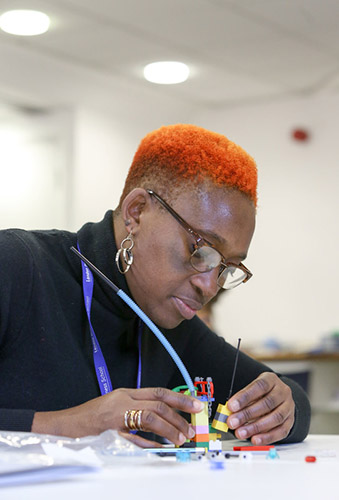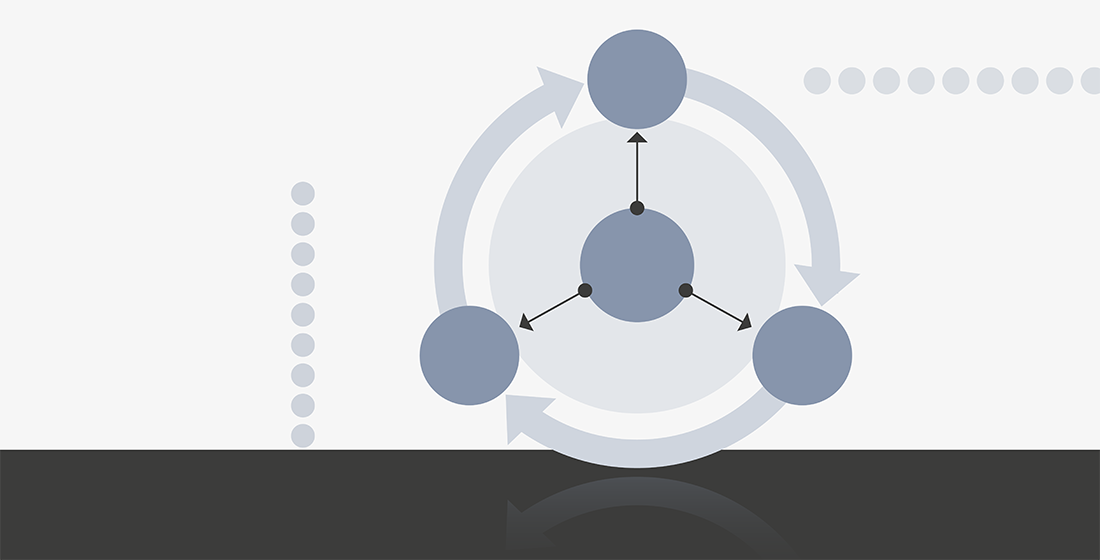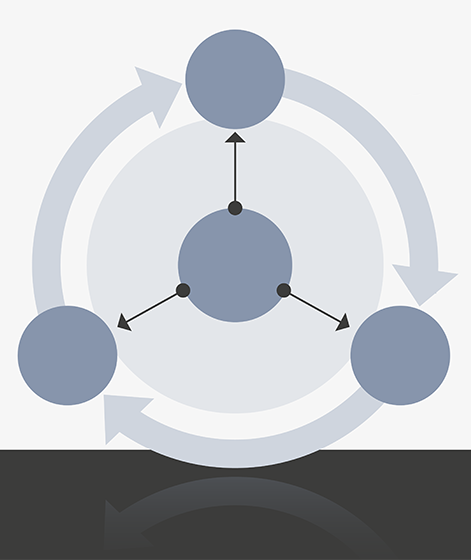![]()
| Goal-directed practice coupled with targeted feedback enhances the quality of students' learning. |  |
We’ve all heard the saying ‘practice makes perfect’ and ‘the more feedback the better’. But is this the full picture? And if it is, how on earth do we balance our students' need for practice with the constraints of the course length and the amount of time it takes us to provide tons of feedback?
Whilst it’s clear that both practice and feedback are two essential parts of an effective learning cycle, we need to explore how we can do this in the most productive way possible.
Let’s start with some simple definitions:
| Goal | The outcome we want the student to achieve. Goals should be student-centred, specific and measurable. You might hear them referred to as learning objectives or learning outcomes. |
| Practice | Any activity in which students engage their knowledge or skills (for example, creating an argument, solving a problem, or writing a paper). |
| Feedback | The information we give students about their performance, which helps them adapt their future behaviour. |
Let’s see how these three elements work together in a positive cycle to direct, repeat and refine performance to guide the student towards achieving the goal.

So, we know we need to give students opportunity to practice, but is all practice equally beneficial? In short, no — lots of kids spend time practicing the piano without becoming an expert pianist. Let’s look at what the research tells us about effective practice and what this means for us in practice.
- Continued learning is influenced by the amount of time a student spends in deliberate practice, rather than in general practice (Ericsson, Krampe, & Tescher- Romer, 2003).
- The first feature of deliberate practice involves working towards specific goals, monitoring our performance, adjusting behaviour to reach the goal and then setting a new, challenging goal
- Students pay more attention to learning that is relevant to specific goals. Rothkopf and Billington (1979)
For students to work towards a goal, the goal needs to be clearly communicated. Generally, this is done in the form of a learning outcome that tells the student what they need to be able to do. It should be specific and measurable.





For example, our novice pianist work towards a learning outcome of: “To able to play the scale of F”. This tells the student specifically what they should be able to do, and it is observable and measurable.
Because students will pay more attention to the learning that aligns with goals, you need to make sure the goals are appropriate to the learning you want them to achieve. It’s important that goals include aspects of higher order skills and thinking, so that students recognize that they need to pay attention to these. For example, this might include learning outcomes around critical thinking, team work, creativity.
Taking our musical learning outcome, it may tell the student what they need to be able to do, However, it doesn’t tell them how well they should be able to do it. There’s a big difference in ability between someone who can stumble their way through a scale, slowly, using one finger and with errors, compared to someone who can play a scale fluently and accurately with both hands at pace.
Rubrics that set performance criteria, help students understand the level of performance that is needed. Goodrich Andrade (2001) found that sharing a rubric with students along with their assignment led to better outcomes in terms of quality of work produced and that students could recognize what good work looks like.




- Be more explicit about your goals in your course materials
- Use a rubric to specify and communicate performance criteria
- Give examples or models of target performance and contrast these with poor examples. It can be particularly helpful to annotate model or poor papers to highlight what they do well or poorly, or how they could be improved
- Conduct a prior knowledge assessment to target an appropriate challenge level
- Build scaffolding into assignments
- Build in multiple opportunities for practice
- Set expectations about the amount, type and level of practice students need to complete to master the skills or knowledge required
- Refine your goals and performance criteria as the course progresses
It’s one thing practicing towards a specific goal, but it’s not much help if you don’t know where you are in relation to the goal and what you need to do to improve.
Imagine two people are asked to arrive at a specific destination. Amanda is given a map with the goal highlighted. When she arrives at the goal destination, she is told that it took her 11 minutes.

Provide targeted feedback that explains how their performance measures against the criteria and what they need to do to improve future performance.
Don’t overwhelm and demotivate your students with too much feedback. Pick out the most salient points for where they are in their development
Remember students may not be aware of the progress they are making, so it’s important to give positive reinforcement, as well as direction on where they can improve.
This can allow you to give feedback to the group, rather than at an individual level. It might also prompt you to see if you had an expert blind spot when assessing their prior knowledge.
By using effective questioning in a group or lecture, with clickers or ‘post it’ notes to collect student answers, you can quickly give group level feedback and address common misunderstandings.
Having students review their peers work and give feedback can help them become better at spotting good work and diagnosing their own weaknesses. Remember to set clear guidelines on both the criteria and how to give constructive feedback.
Provide feedback at a time and frequency that supports the learning goal- Generally having frequent opportunities to give feedback is beneficial as it allows students time to adjust their performance. This is especially useful when you build in multiple practice opportunities
- Encourage reflection and ask students to explicitly state how they have used feedback in their next draft or assignment

- By clearly articulating a goal and performance criteria, we can direct the student towards deliberate and appropriate practice.
- As instructors we use the goal and performance criteria to evaluate the student’s performance, which in turn allows us to give targeted feedback that guides the student in what they need to do to move towards the goal.
- The student uses the targeted feedback to adapt their behavior in their next piece of deliberate practice.
